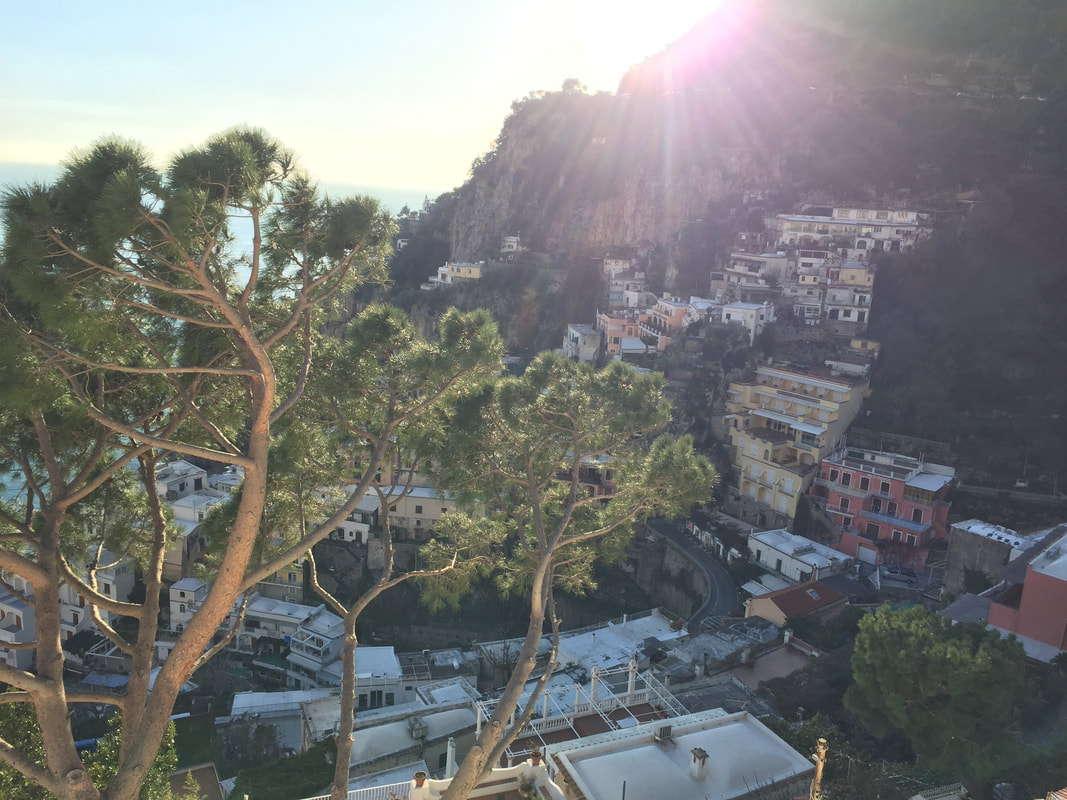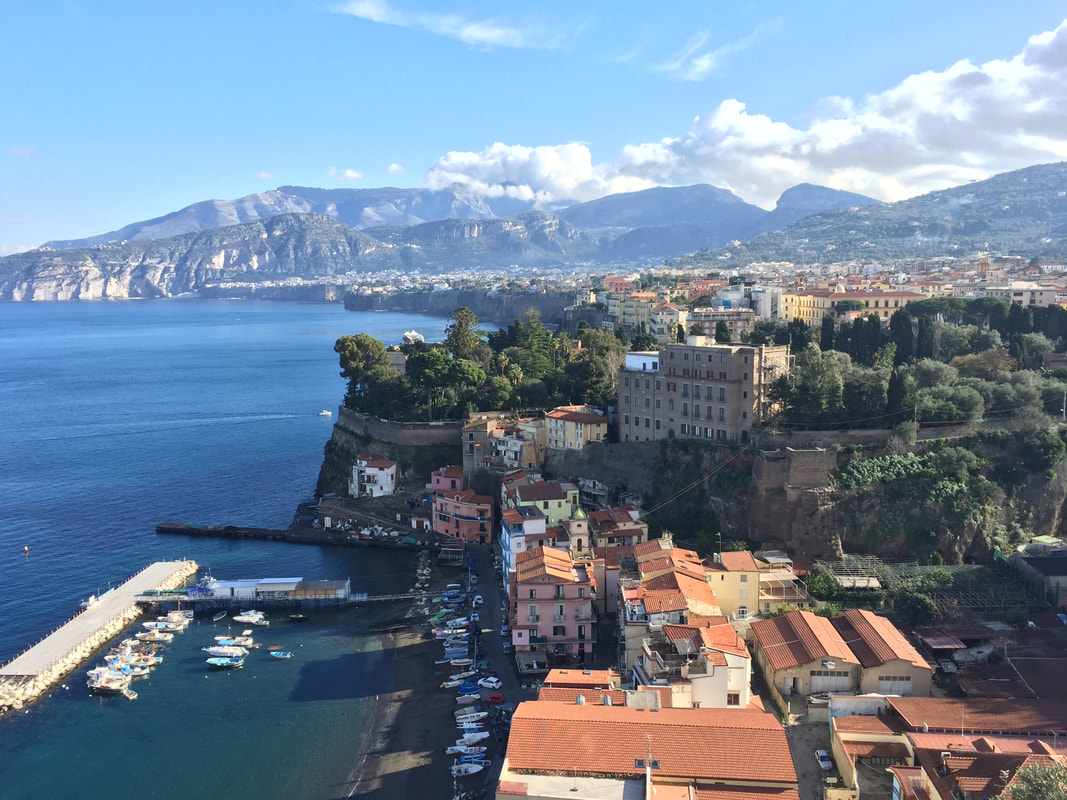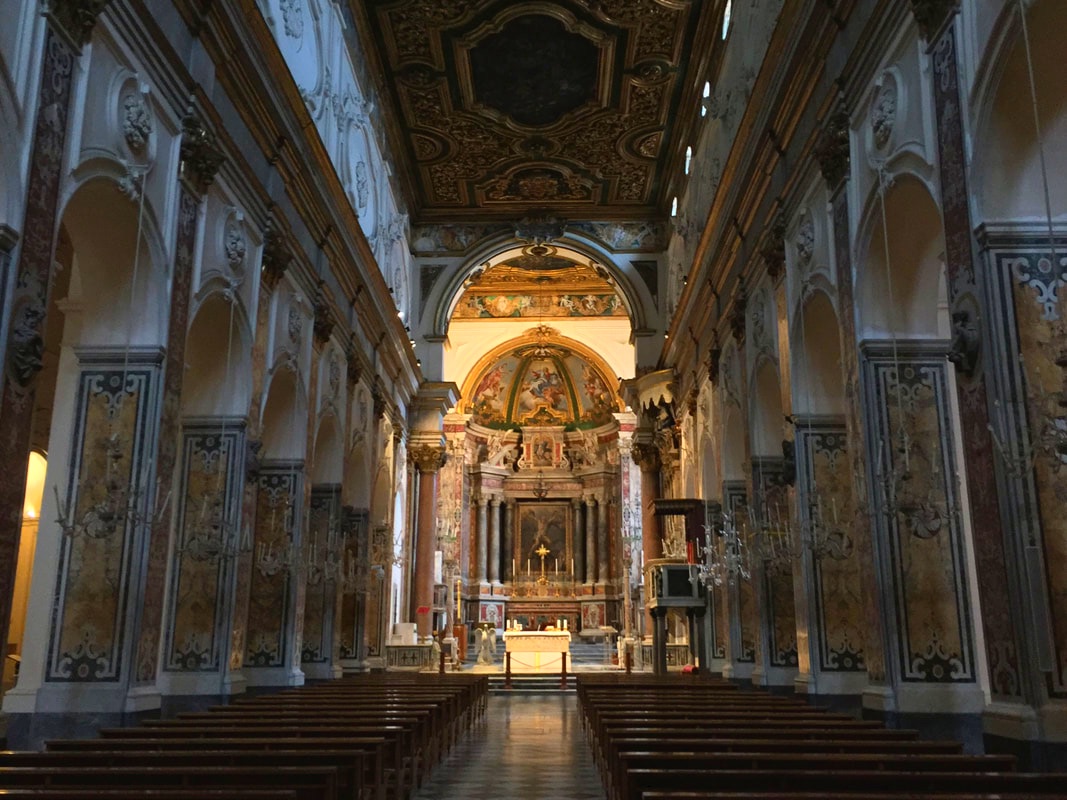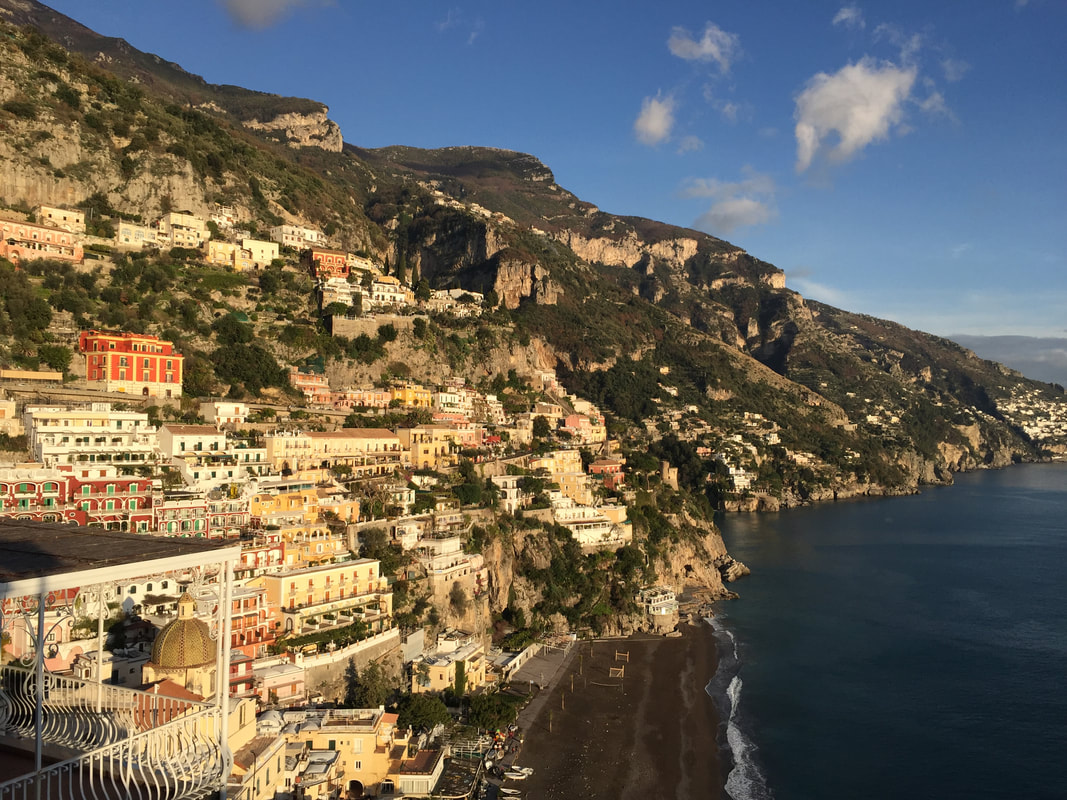SummaryAirport Rating N/A Reception of locals **** Cost: £££££
The Amalfi Coast is one of the most famous coastlines in all of Europe, located south of Naples and to the west of Salerno. The coastline is most famous for its dramatic cliffside drops that leave very little room for arable land, but create a stunning spectacle. In fact, as with the rest of my blog, the photos in these article are taken with an old school 8MP camera, but still look postcard perfect. Three towns in particular are heavily associated with the coast; Sorrento, Positano and Amalfi, and during my recent trip to Italy, I visited all three. The Sorrentine PeninsulaThe Amalfi Coast has been home to the Greeks, Romans, Normans and Italians over the centuries, giving the area a relatively rich history considering the small size of some of the settlements. It wasn't always like this. At the turn of the previous millennium, the city of Amalfi was a fairly large settlement, conquered by the Normans and Pisans by force. After its conquest by Pisa, the city declined in importance as commerce moved either to the interior of Italy or to the north. The city, and the area, reverted to nothing more than a large fishing village. Following the reunification of Italy in the middle of the 19th century, rich Italians began to buy holiday homes in the area. By the early 20th century, the area had found a new source of income through international tourism. Upper class British tourists began arriving in the area each summer in fairly large numbers. Today, the Amalfi Coast is more international in its flavour. The advent of cheap flights, coupled with the number of films and music videos being shot on the cliffs of Positano have made this a very popular part of the country with foreign tourists. The whole peninsula is something erroneously termed the Amalfi Coast - the actual Amalfi Coast is just the southern shore of the Sorrentine Peninsula, therefore, Sorrento is technically not on the Amalfi Coast, but most tourists use the large town as a base for travelling around the Amalfi Coast. I caught the Circumvesuviana from Naples to Sorrento via Herculaneum and Pompeii. The whole journey takes a little over an hour and costs less than €4. You can read more about the journey in my entry on Pompeii here. The weather was nothing short of perfect during my trip to Italy, but checking the forecast, I realised I was going to run into rain over the next couple of days, therefore chances were that I would have just one town that I could really spend time exploring. Almost every online review unanimously mentioned Positano as the most scenic of the three towns and therefore, no sooner had I arrived at Sorrento train station, that I jumped onto a SITA bus to take me to Positano. PositanoThe SITA bus is a bus that serves the local area, and a regular Sorrento to Amalfi service takes both locals and tourists between the different towns. At roughly €2, it is both cheap and efficient, and you are able to buy tickets for the bus at the newsagent on the ground floor of the station. The buses are fairly modern. and although I've heard it's standing room only during the summer, my trip during the winter was fairly relaxed and comfortable. In fact, at Sorrento, there was only myself and a handful of tourists on the bus, however as we went through different towns we picked up more people, mainly locals. If you get on the SITA bus, you should sit on the right hand side of the bus. In all honesty, both sides have good views, but once you leave Sorrento, the right hand side looks over the cliffs and the towards the Mediterranean Sea. The trip from Sorrento to Positano took about 50 minutes along the Strada Statale 163 highway, surely one of the most scenic routes in Europe. The road winds along the Amalfi coast, and for much of its route, is the only road connecting the different settlements. I won't lie, the constant turning made me a feel a little travel sick (although much worse was to come). There are two stops in Positano, I got off on the first stop, right at the top of the hill and the view is simply jaw dropping. To get from the bus stop to the beach, it is a fair bit of a walk down the winding cliffside, but definitely worth it. The town, made famous in a number of films, is the most beautiful on the Amalfi Coast due to the dramatic cliff drop. Houses, bars and restaurants are embedded into the cliff and from certain perspectives looks like they are sitting on top of each other. The word that I would describe to use Positano is postcard perfect. I slowly made my way to Spaggia Grande, the main beach in Positano via a lot of stairs and narrow passageways. Having walked around 100 miles already over the previous week, and carrying my bag, my achilles tendon was beginning to get sore but I was definitely distracted by the buildings all in a kaleidoscope of colours. The sea at Positano is a brilliant blue and at the bottom I decided to get some food. Given that it caters to tourists, Positano, as with the rest of the Amalfi Coast isn't as cheap as Naples and has prices closer to Rome. I spent my time in Positano walking the grounds of the Santa Maria Assunta, a beautiful church and the passageways lined with shops. Given that I visited during the winter, the shops were mostly closed, and the streets empty, with isolated pockets of people in bars or on the beach. Even with the rain to come, I visited on a warm January day with clear skies and a temperature of 20 degrees celsius. I returned to the beach to watch the sunset, the golden rays shimmering off the water and creating even more colour. Looking up at the cliffside that I had climbed down was a phenomenal view, seeing all the houses almost stacked on top of each other along the hillside. At nightfall, I walked to the second of Positano's bus stops and waited a handful of minutes for the bus to arrive. The schedule is regular, from up to 15 minutes at certain parts of the day, down to every 30 minutes as it gets quieter. As I left Positano the lights of the buildings looked almost magical on the hillside, and then it was a 50 minute trip back to Sorrento. SorrentoWith a population slightly less than 20,000, Sorrento is the largest town in the Sorrentine Peninsula and sometimes coupled with the Amalfi Coast. Located on the northern shoreline, the city faces Naples, and during the summer months, it's possible to catch a ferry from Naples to Sorrento. There is no doubt that Sorrento is significantly larger than both Positano and Amalfi, but it was also my least favourite of the three towns. During the second day of my stay, the rain held off until late afternoon, giving me most of the day to explore the town. I won't lie, it reminded me more a kitschy Spanish island resort than anything else. The population was slightly older (a lot of older men with much younger wives), and those that were younger were mainly couples. It felt like one big giant tourist trap, but there were still a few places that I enjoyed visiting. The Villa Comunale, near the centre of the town is one of the more famous attractions in the town. The Comunale is a small park that overlooks the Marina Grande, Mount Vesuvius, the Mediterranean Sea, and in the distance, Naples. It isn't however, the best place to take a photo in Sorrento (we will get to that). I also walked along the Corso Italia, the main road through the town, lined with shops on each side. I walked toward the football stadium of the local team, but high walls prevent you looking into the Stadio Italia, which makes sense, otherwise you'd be watching free matches. I continued to walk through the Marina Grande area and was aware of Bagni della Regina Giovanna, a small pool of water beautifully separated from the mainland through a natural rock tunnel. Given the state of my achilles tendon, and the fact that it was a 45 minute walk from the town (and I wasn't about to pay for a taxi), I had decided that I wasn't going to visit it, however, finding myself lost near the Marina Grande area of the city, I realised that I was now almost a third of the way there. I decided to take a walk along the main road, the same road I had caught the bus to Positano the day before. As I crossed over the bridge out of Sorrento to my left was an incredible view of the town (the photo above), easily the most insta-worthy place in Sorrento. I continued my walk along the main road. With no pavement and cars, buses and lorries passing very close, I didn't feel particularly safe, especially when I'd approach a blind corner but eventually I came to a small cobbled street which was a hilly passage down to the pool. It was definitely worth the effort! I was completely alone on a small rock overlooking the sea and the town of Sorrento, and right below me was the natural tunnel over a small cove, with turquoise and clear waters in the Bagni della Regina Giovanna. It was so beautiful and so peaceful I actually ended up staying almost an hour, and it was only when I saw the dark clouds of a rainstorm in the distance that I remembered I needed to get back. The walk back up the hill was kind of brutal, especially with an injury, and a stray dog decided it wanted to follow me the whole way, bringing back memories of my climb to Machu Picchu. The road seemed even more dangerous on the way back, and about 20 minutes into the walk the heavens opened and I found myself caught in the rain. I had just caught the edge of the storm, so managed to get back to my hotel in a somewhat okay position, within 10 minutes the skies dramatically darkened and for the rest of the day (and night) there was a monsoon of rainfall. AmalfiA small window of dry weather on the morning of the third day gave me the opportunity to catch a bus to Amalfi, the town that the coast is named after. On the other of Positano, the SITA bus took over an hour and a half to go to Amalfi, retracing my steps of two days before. This time, I really felt travel sick. I don't know if it was because I was tired, or that I hadn't eaten, but I found myself struggling through the bus ride, placing my head on the back of the seat in front to try and forget about the constant turns the bus was making. Unlike Positano, the bus stops right at the foot of the Amalfi coastline, meaning there are no hills to climb - well not if you don't want to. I had read about a short hike called the Valle delle Ferriere so I decided to do it. The walk is well signposted from the centre of the town, a town much larger than Positano but smaller than Sorrento. On the right side is the beautiful Duomo di Sant Andrea, an 9th century church and then a small high street with various side road radiating from it. I walked straight through and up towards a hillside, following signs for the walk. Within 15 minutes, I found myself completely alone, on a stone path overlooking the town of Amalfi. It was at this point that it began to rain. So there I was, doing a hike in shoes that aren't made for walking, carrying all of my luggage and now its raining. I decided to continue up the hill as the path turned to gravel, and then just mud. I came across some ruins that I walked into and thought this would be the perfect setting for a horror film. The reward for the climb are a series of waterfalls, each more spectacular than the last. However, with the path getting increasingly slippery. I decided to turn back after a one and a half hour climb - at which point the rain really began to come down. I hurriedly made my way back into the town where I must have looked very stupid! The town is very pretty, much nicer than Sorrento. A small pathway with a sign saying Up The Ancient Staircase in the middle of the town took me on a detour along narrow corridors and small shops. I quite liked it, almost welcoming you to another world - it was something different and it worked. I continued a short walk around the town before climbing the stairs to Duomo di Sant Andrea. The cathedral is incredible, rivalling the beauty of those I saw in Naples and Rome. The top of the staircase looks over a central square in Amalfi, but the inside is where the real magic is. Tall golden pillars support a deceptively large church. Again, I spent a few minutes walking through the building and around the perimeter before making my way back to the bus stop and the long ride back to Sorrento. My tips for the Amalfi CoastSo would I recommend visiting the Amalfi Coast? Yes, but it's definitely better with your family or a significant other. It's not that there weren't any other solo travellers around, there were, but it's one of the few places where I couldn't help but think bringing someone else along may have actually made it better. The circumvesuviana at €3.90 is both a cheap and efficient way of travelling to the Amalfi Coast from Naples, and the best place to catch it is at the Porta Nolana station in the city, before the crowds get on at Napoli Centrale. Once on the Amalfi Coast, the SITA bus is the best way to get from town to town - just buy a ticket at Sorrento station, make sure your stamp it on the machine in the bus and off you go for less than €3. As a Sikh, I came across no issues. I visited during the winter when the whole coast was very, very quiet. In a way that's good, I spent hours walking around the three different towns with no crowds whatsoever. On the whole the weather held out as well. The flights are cheaper, the hotels are cheaper and it's much easier to appreciate the beauty. However, on the flip side, visiting the Amalfi Coast in the winter means that most places are closed and you have to pray you arrive on a day with good weather. Of all the settlements along the Amalfi Coast, Positano is by far the most beautiful, but it is also the most expensive. Sorrento, the place I liked the least is the cheapest and I stayed at at the Maison Kalea, which for £45 a night in the off season wasn't too bad at all. In fact, the room I had was huge! Finally, if you're tight for time, it is possible - just about, to see all three in a day. Originally, I didn't want to spend a day in each, I wanted to catch the SITA bus to Amalfi in the morning, spend a few hours there, and then on the way back stop off at Positano for sunset and arrive back in Sorrento. Annoyingly, forecasts of rain meant that I decided to visit Positano separately to ensure I managed to get good weather and although I didn't regret it, the journey to Amalfi, retracing the road to Positano, although beautiful, was definitely the least favourite part of my trip. Comments are closed.
|
AuthorBritish Sikh, born in the Midlands, based in London, travelling the world seeing new cultures. Categories
All
|







 RSS Feed
RSS Feed